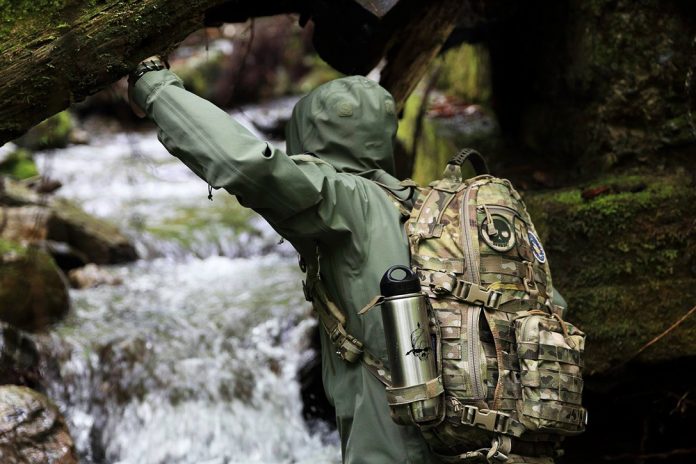The Ultimate Guide to Bugging Out
When a catastrophic disaster strikes and knocks out the foundations of modern, safe society, how will you and your family respond? While sheltering in place – bugging in – is the preferred option in most emergencies because of the protection and supplies your home affords, at times refusing to move can be a death sentence if violence erupts or your supplies run out. Instead, in many cases, the most secure option for you and your family may be simply to get out of dodge (bugging out).
Bugging out comes with numerous risks, but it also gives you and your family a chance to reach relative safety, additional resources, or even an area outside of the disaster zone. Importantly, bugging out successfully requires careful planning ahead of an emergency to identify potential safe zones, stockpile essential supplies, and ensure that all of your family members are on the same page when it comes time to go. Having a bugging out checklist and a customized bug out bag can go a long way towards ensuring that you have everything you need ready to go so that you can move rapidly and efficiently when the time comes.
We will cover everything you need to know about bugging out, from when and why to choose to bugging out over bugging in, to choosing a destination and making a plan for getting there, to scavenging for essential supplies and information along the way.
Related: Top 10 Best Bug Out Pack
When and Why to Bug Out?
In general, bugging out should not be your immediate first option when a disaster strikes – bugging in is typically a safer response. This is because sheltering at your home affords you access to the stockpile of food and water you should have there as well as a nearly unlimited range of household supplies and defensible space. However, there are numerous situations in which it should be apparent at the outset of the emergency that the time has come to abandon the area and set your bug out plan into motion.
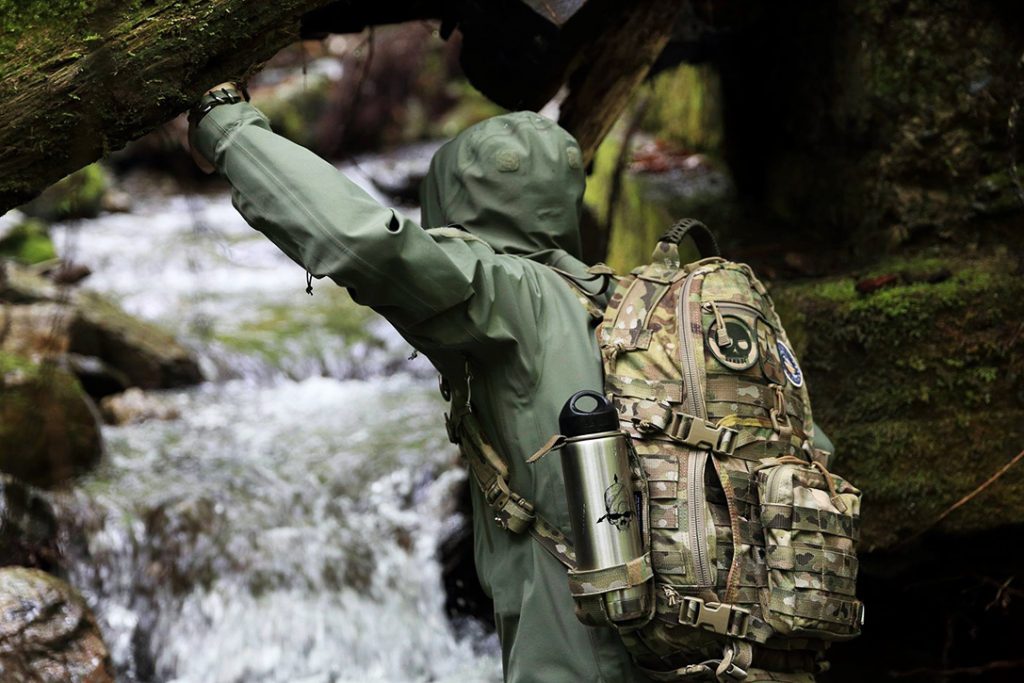

The most common reason for choosing to bug out is that your home, and possibly the entire surrounding area, is not safe. This could be because of the nature of the disaster itself, if the emergency calls for extreme flooding or fire that threatens your home or if the area itself is compromised by chemical or biological contamination of the air. Alternatively, your home could become unsafe because of violence that has erupted in the area or infiltration of your home by looters in search of supplies. If you live in a densely populated urban area, the chances of looters and your ability to find additional resources beyond your stockpile over the course of a long emergency will be greatly diminished, which could also contribute to your decision to bug out at the outset of the emergency.
When making the decision to bug out at the outset of an emergency, every minute matters – especially if you live in an urban area. The longer you wait, the more likely it becomes that the roads will become clogged, that violence will break out as the unprepared realize the severity of their situation, or that someone else will beat you to your bug out destination.
If you do initially decide to bug in rather than bug out, you still need a bug out plan since there may come a point when you need to abandon your home as a place of refuge. The most common reason for you and your family to make this decision is that your stores are running out, and there is either no additional food and water in the vicinity of your home or the water is suspected of contamination that cannot be dealt with by conventional water treatment methods. Alternatively, the situation changing outside your house – the epicenter of the disaster moves closer to your home, or violence is spreading nearby – can also be cause for leaving your home for a destination outside the disaster zone.
Choosing a Bug Out Location
One of the most important aspects of bugging out is choosing where you will be bugging out. This destination needs to offer both relative safety from the disaster or ensuing violence from which you are fleeing as well as plentiful opportunity to scavenge food, water, and other resources. In an ideal situation, the scale of the disaster will be limited and you will be able to bug out to virtually anywhere that is unaffected. However, given the short amount of time you have to determine the nature of the catastrophe before deciding to bug out, it is generally best to assume until notified otherwise that you will need to find a wild place to take shelter.


There are pros and cons to nearly every imaginable location and geographic region. For example, heading into the mountains offers the chance of abundant game and water sources, but if you will be heading into the mountains into the fall and winter months then developing shelter will be paramount. On the other hand, lowland areas are more likely to be populated and will provide less cover from other inhabitants, but living through colder weather will be significantly easier. In general, you need to consider not only food and water availability at your destination but also how well hidden your shelter will be from people passing by and how easy or difficult a position you will have to defend if you come under attack. In addition, if you will be at your bug out destination indefinitely, it is worth considering whether your choice of location can support small-scale farming or livestock to supplement your hunting.
This seasonality also calls attention to the fact that in different seasons, and for different categories of disasters, different locations may be better or worse. It is a good idea to have multiple destinations in mind as part of your bug out plan and to constantly reevaluate which of those potential destinations are still viable options. Also beware that other survivors may have identified some of the same locations as you and may reach your destination first, in which case you will want to have a nearby backup destination.
Related: The Best Places To Live Off The Grid
How Will You Get There?
Once you have a destination – or multiple potential destinations – in mind, you need to think carefully and realistically about how you will get from your home or work, rendezvous with your family, and travel safely to these destinations. Depending on the nature of the disaster, your car may or may not work and roads may or may not be passable. Especially if you are bugging out after bugging in for several days or even weeks, expect that your car’s gas may have been siphoned away and that few roads are still passable. Again, consider the season and weather in which you will be traveling since, for example, many roads are impassable in winter if the local government is no longer running snowplows.


For these reasons, it is critical to have multiple routes planned for each of your potential bug out destinations. These routes should, whenever possible, avoid traveling near population centers – driving an operational vehicle filled with bug out gear is almost certain to attract unwanted attention. In addition to keeping a spare tank of gas around your home, keep your car prepared for an emergency by always keeping the tank as full as possible, and ideally never below half full.
Although bugging out on foot is much more difficult than by car, it is essential to take this mode of travel into account in your planning – after all, any number of situations can prevent you from leaving immediately at the outset of an emergency, and it may be too late to move your vehicle only hours later. If you are traveling on foot, it is good practice to travel mostly at night to avoid being seen. In addition, you will need to plan your route such that it passes potential water sources and places to forage for food since there is little chance that you will be able to carry more than a few days’ worths of food and water on your back. When planning your route, consider the weight of your pack, the terrain you will be traveling over, and your own personal fitness to estimate how long it will take to reach your destination.
Keeping a Bug Out Bag
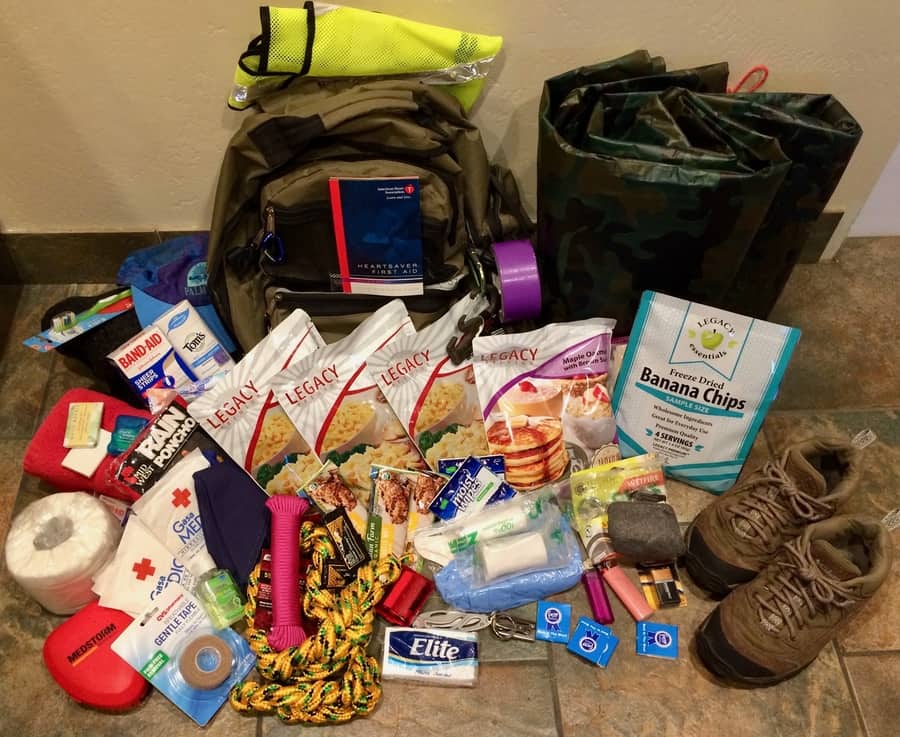

Once you have a plan for where you’re going and how you’ll get there, the next important step in preparing to bug out is to keep all of your bug out gear in a single bag that is ready to go at a moment’s notice (check out some awesome premade bug out bags here). Your bug out bag should contain everything you need for bugging out, including several days’ supplies of food and water, emergency medical supplies, and a lightweight tent to use as a shelter. Your bug out bag should also contain supplies for hunting and defense, including ammunition and a high-quality knife. It is good practice to keep a running bug out bag list that reminds you of everything that is contained within your bag, as well as what items need to be replaced from time to time to stay ahead of expiration dates.
Your bug out bag is best kept in your car (or close to the exit at home) along with an extra stockpile of food and water so that everything is ready to go as soon as you can reach the car after an emergency breaks out. If you have additional supplies that you do not typically keep inside your car, make sure they are in the garage right next to your vehicle so they can be quickly loaded in. It is also worth giving each member of your family their own bug out bags, each filled with individual supplies like additional food and water so that they have their own essential supplies in case you are separated or so that weight can be distributed among your entire family in case you end up traveling on foot.
Establishing an Emergency Shelter
Either at your bug out destination or along the way, you and your family will need shelter from the weather and from anyone else who may be out wandering the roads. The simplest and most portable shelter, which should be a component of your bug out bag, is a collapsible tent of the kind used by backpackers. Not only are these lightweight and durable while keeping out the elements, but they tend to have a low profile that makes them somewhat easier to hide out of sight while you are sleeping.
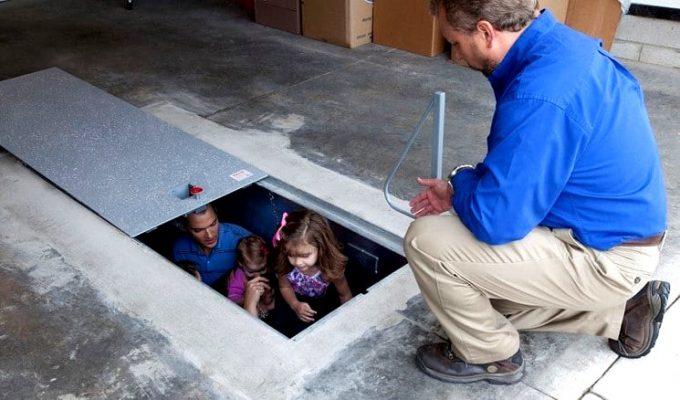

However, tents are not the only sources of shelter – and this is an area where using the tools in your bug out bag and being creative can make a big difference in your safety. Although tents can be somewhat well-hidden overnight, fixing a shelter out of natural materials can help you to blend into the surroundings if you are in a more populated area or near a major road. If you have a hatchet or knife in your bug out bag, cutting wood and foliage to create and camouflage your shelter is where the potential of these tools can truly shine.
Another great way to blend in is to use the “junk” that is already dotting the landscape, that most marauders would not think to check themselves. This can include empty shipping containers or worn-down buildings that appear to have been thoroughly looted already. However, these shelters are best used as temporary shelters since their main camouflage is being readily visible – and eventually, someone will come to take a closer look at them.
Related: 15 Tips To Prep For Sheltering
Planning for Food and Water
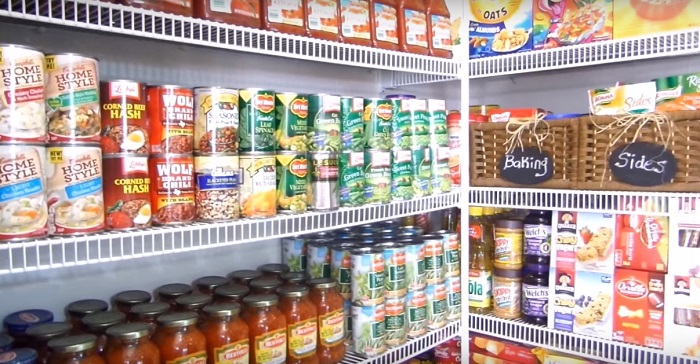

Food and water are the most essential – and most challenging – part of bugging out. Whereas when bugging in you will have a known stockpile of food and water to last for weeks or months, when bugging out you will always be nearing the limits of the food and water you have on hand. This is especially true if you are on foot, as the majority of the weight of your pack will be food and water – and the heavier your pack is, the longer it will take you to reach your destination.
Since your initial supplies of food are likely to run out within days of an emergency breaking out, you will need to constantly be looking for ways to replenish your supplies. When it comes to food, the best – and safest – way to do this is to hunt and fish for your own game. This is where having a bow, rather than a gun, and knowing how to use it can be a major advantage since it will not use up valuable ammunition and you will not loudly attract attention to yourself when you release an arrow. However, if you do use a firearm, be careful to dress your game quickly and then move your meat and your camp away from the area where you fired the shot to avoid attracting unwanted visitors. Keeping fishing gear in your bug out bag can also be extremely helpful for getting food from the land, especially since you need to consistently find water sources along with your route in any case.


If hunting is not an option, scavenging food along your route is a possibility. However, note that scavenging from retail stores, distribution centers, or even abandoned trucks along the road can be extremely dangerous – these are the same food sources that less prepared people will be flocking to. If you do decide to scavenge for food, use extraordinary caution and be prepared to defend yourself.
Once you have reached your bug out destination, small-scale farming can be an important contributor to your diet in addition to hunting and fishing. Depending on the circumstances of your new home base, there may be tools to help you get started with farming and potentially even livestock that you can begin breeding. However, keep in mind that you will either need to keep seeds as part of your bug out gear or scavenge seeds along with your path if you ultimately plan on establishing a small garden once you reach your destination.
Water is relatively straightforward to acquire, although it can be difficult to come by depending on the geographic area you find yourself in. Any water that you wish to drink must be treated, either by water treatment tablets or a filtration device, so be sure to include these in your bug out bag. In the case that you are not able to come by many natural water sources, bottled water can be scavenged from retail stores – but the same warnings that apply to scavenging for food apply to scavenging for water as well.
Keeping Abreast of the Situation
In the midst of bugging out, it is easy to lose track of how a disaster is unfolding and what is happening in the urban centers that define whether society is falling apart or slowly rebuilding. If you are traveling by car, the radio in your vehicle is a simple way to keep up with what is happening in the outside world and whether there are any developing obstacles along your planned route that you need to know about. Although it adds weight, carrying a small portable radio when you set out on foot can be essential for the same reasons. Keep in mind that any areas that are officially deemed “safe” over radio transmissions are likely to become crowded quickly and are best avoided in a widespread emergency.
If you do find yourself needing to approach towns and retail stores to scavenge food and water, keep an eye out for any clues – newspapers, flyers, and left-behind notes – that may provide clues as to the current situation in your broader region. If you encounter other friendly survivors, be sure to ask after the latest news in addition to bartering for needed supplies.
Final Thoughts on Bugging Out
When disaster strikes and your home is no longer a safe shelter, bugging out is the next best option for protecting yourself and your family. Although the decision to bug out must be made in a matter of minutes, preparing to bug out starts years ahead of time. Your bug-out preparations should include identifying numerous potential safe areas and a variety of routes to reach them, curating a well-stocked bug out bag with all of the survival supplies you and your family need, and stockpiling food and water in your car to last you through the initial days on the road. Although bugging out is inherently unsafe, the better prepared you are with supplies and a versatile plan of action the more likely you are to successfully and safely reach your destination.



